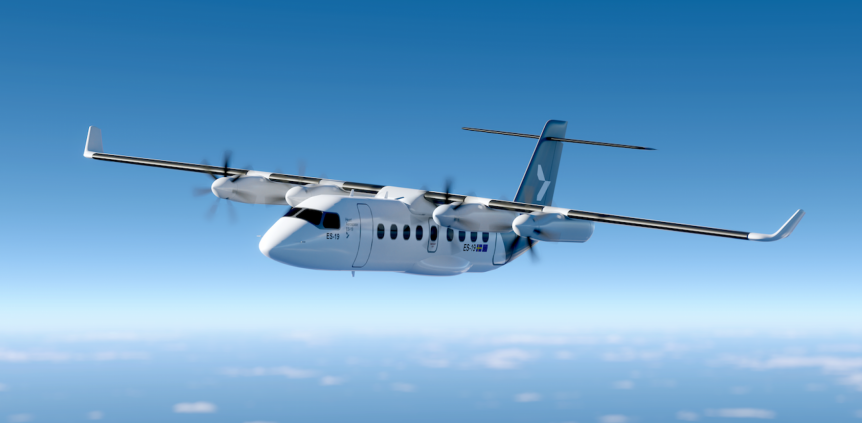Finnair has entered an agreement with Swedish electric aircraft developer Heart Aerospace, potentially acquiring up to 20 of the 19-seater ES-19 aircraft for short-haul flights. The Finnair electric aircraft initiative aligns with its broader sustainability goals, and Heart’s CEO Anders Forslund has confirmed over 300 potential orders from 12 interested airlines, with Finnair standing out as a notable partner.
Heart Aerospace unveiled its electric propulsion system in September 2020, which is designed to power the ES-19. This aircraft, expected to enter the market by 2026, features four propellers driven by electric motors. Its aluminum-fuselage, fixed-wing structure includes winglets and a distinctive T-tail, resembling a scaled-down De Havilland Canada Dash 7.
Forslund added that Heart will soon announce partnerships with companies contributing major components to the ES-19 and possibly assisting in its production. Finnair’s potential order supports Heart’s aim to fly carbon neutral by 2045 and reduce its fleet’s CO₂ emissions by 50% by 2030.
In 2019, Finnair joined the NEA (Nordic Network for Electric Aviation), helping to promote sustainable aviation across the region. Meanwhile, the Norwegian government has mandated all domestic flights transition to electric aircraft by 2040. Sweden is pushing even further—requiring fossil-free domestic air travel by 2030 and extending that to international flights by 2045. The Swedish government also plans to impose takeoff and landing fees starting in July, incentivizing the use of lower-emission, fuel-efficient aircraft.
Heart claims its all-electric ES-19 aircraft will have a range of 400 km (217 nm), fly at speeds of 215 knots, and operate on runways as short as 750 meters (2,461 feet). It’s designed to cruise at 180 knots, and the company asserts that the relatively lower speeds won’t be a drawback for short regional sectors, as the ES-19 will utilize smaller, less congested airfields, ultimately reducing door-to-door travel times.
To support the operation of the Finnair electric aircraft, infrastructure development will be essential. Finnair may need to upgrade or develop small airports to enable regional connectivity between smaller cities and towns. Anne Larilahti, Finnair’s Head of Sustainability, noted that “you need to recognize what is required at the airports as well, as you cannot expand faster than the obtainable resources that hold up these airplanes.”
Airports will need to install charging stations at each airfield where the aircraft lands and takes off. Heart Aerospace claims that the ES-19’s batteries will support up to 1,000 charging cycles in their lifetime but will require recharging after each flight.
Larilahti also emphasized how the harsh Nordic climate makes the region ideal for proving the technology’s robustness. “Our cold weather affects operating a light airplane and batteries. If we can do it here, it will be easier to do it elsewhere,” she explained.
Photo Credit: Heart Aerospace

